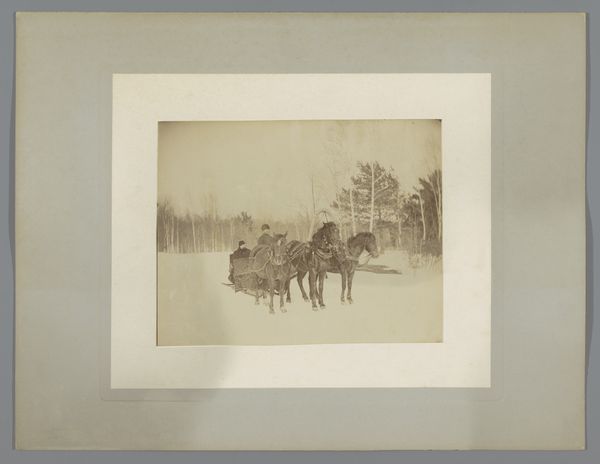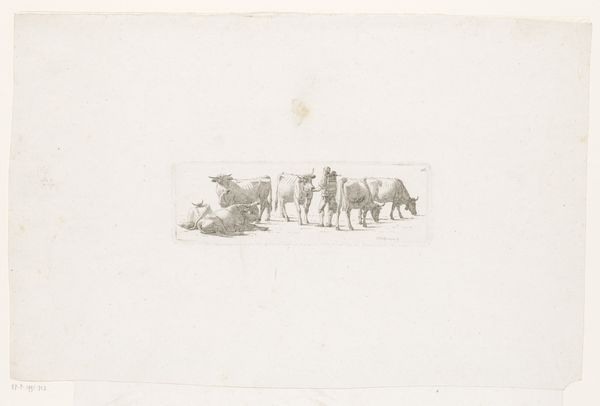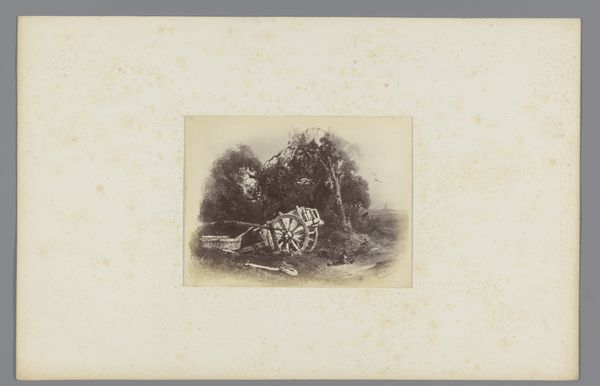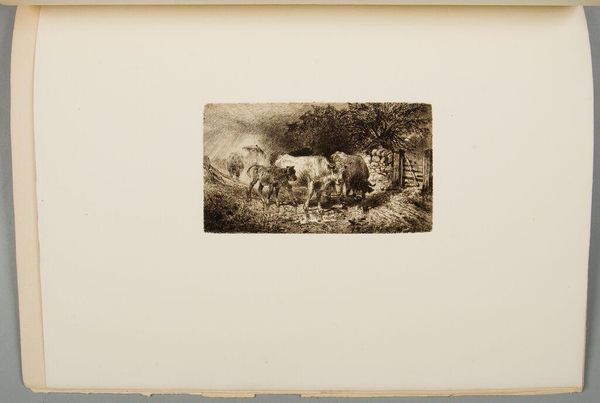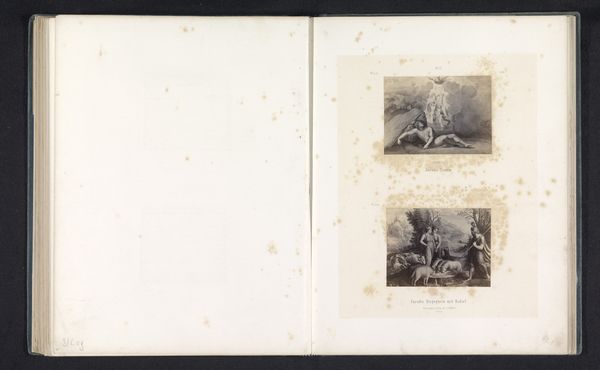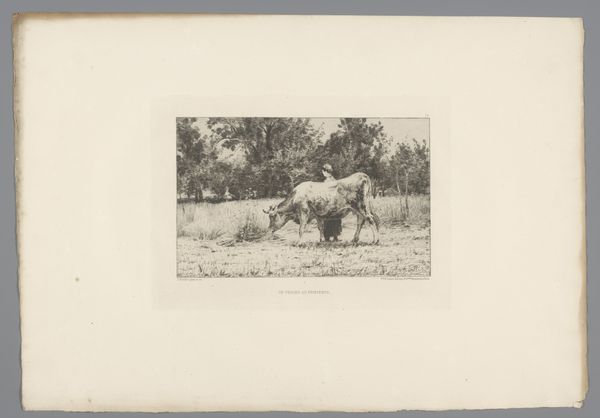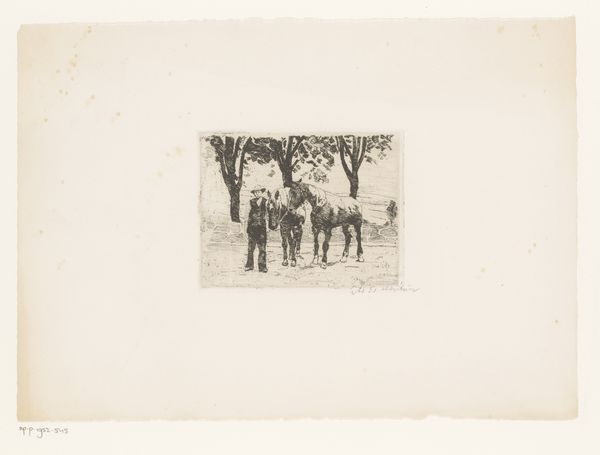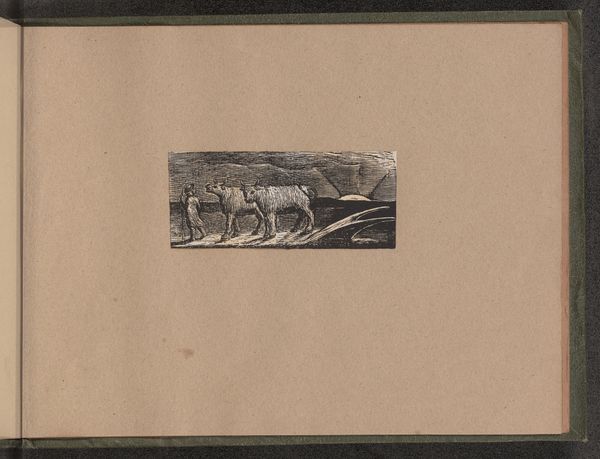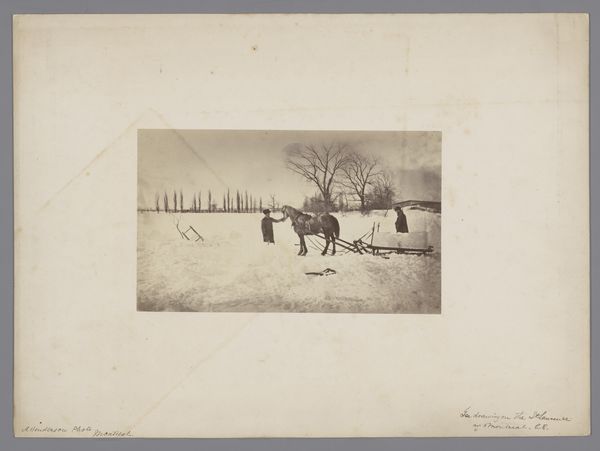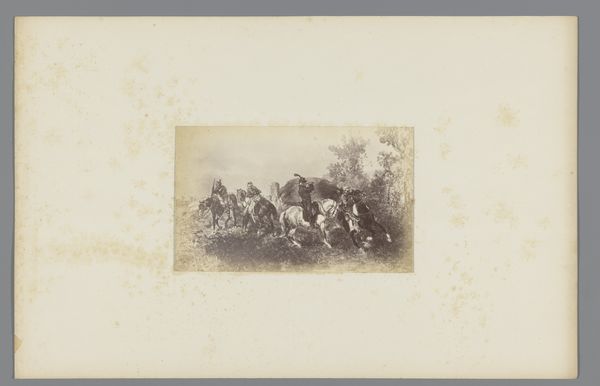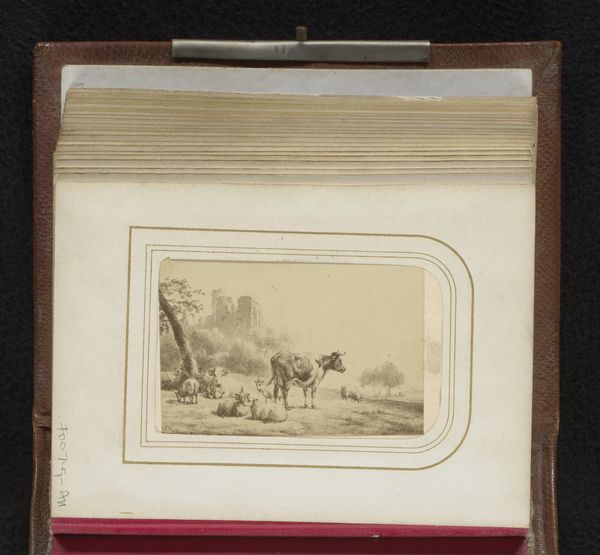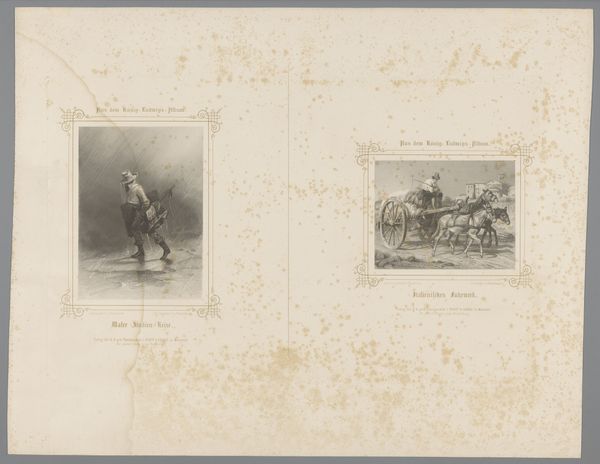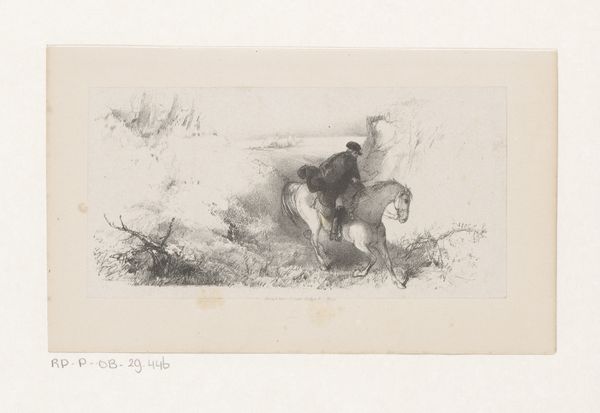
Fotoreproductie van het schilderij 'De oude dag' door Gerardus Johannes Bos c. 1866 - 1871
0:00
0:00
drawing, print, pencil, graphite
#
drawing
# print
#
landscape
#
pencil
#
graphite
#
realism
Dimensions: height 134 mm, width 185 mm
Copyright: Rijks Museum: Open Domain
Editor: This is a photographic reproduction of a drawing by Gerardus Johannes Bos, titled 'The Old Age', from around 1866-1871. It depicts a lone horse in a desolate, wintry landscape. There's something incredibly poignant about it; the horse looks so thin, so weary. What strikes you when you look at this, what story does it tell you? Curator: It’s a striking piece precisely because of that poignancy you mention. We see an animal clearly past its prime, set against a bleak background, and it’s impossible not to consider the social implications. How were animals, particularly working animals, treated during this period? Was their 'old age' one of respite or continued hardship? Bos’ work asks us to think about our relationship with the non-human world and to consider animal rights within the socio-economic context of 19th century Netherlands. Editor: That's a really interesting angle I hadn't considered. It’s easy to look at it and just feel sympathy, but thinking about it in terms of working animals and their rights gives it a much deeper resonance. So you're suggesting that the image isn’t just about the individual horse, but about the wider systemic issues? Curator: Precisely. Consider also the title, "The Old Age". This phrase alludes not only to the animal's life cycle, but potentially to societal attitudes towards aging populations, both human and animal. Can we see this depiction as a critique of industrial capitalism, where the worth of any being is determined by its productive capacity? Bos invites us to look beyond the sentimental and towards a more structural analysis. Editor: I see that so clearly now, the way that the animal becomes symbolic of societal inequalities! I initially just saw it as a sad picture of a horse, but now it’s really opening my eyes to all the hidden layers of social commentary it contains. Curator: And that's the beauty of engaging with art – seeing it as a reflection, and a critique, of the world around us. There's so much that animal studies can teach us about the politics of looking, so it is helpful to move beyond empathy and toward understanding.
Comments
No comments
Be the first to comment and join the conversation on the ultimate creative platform.
